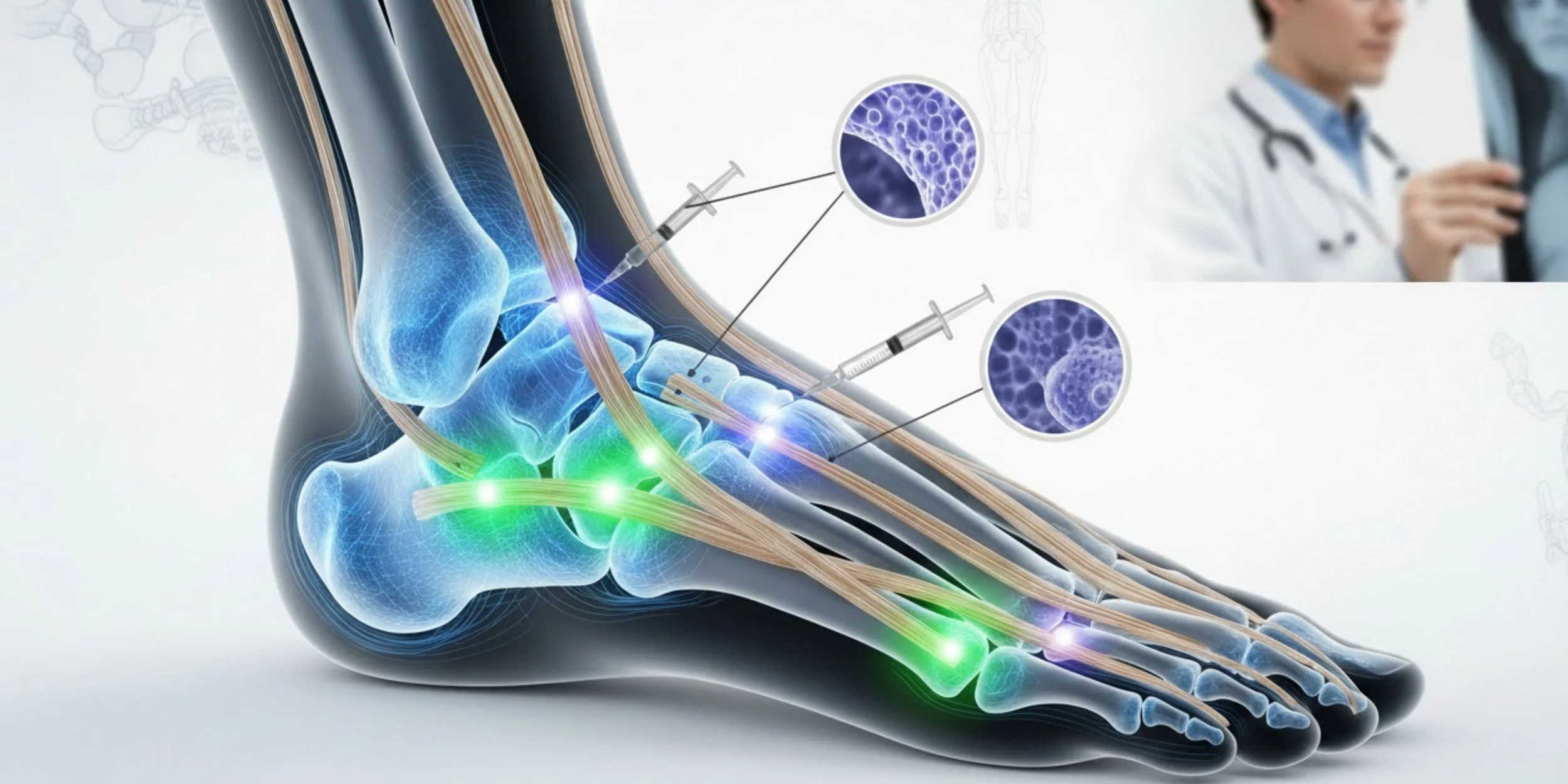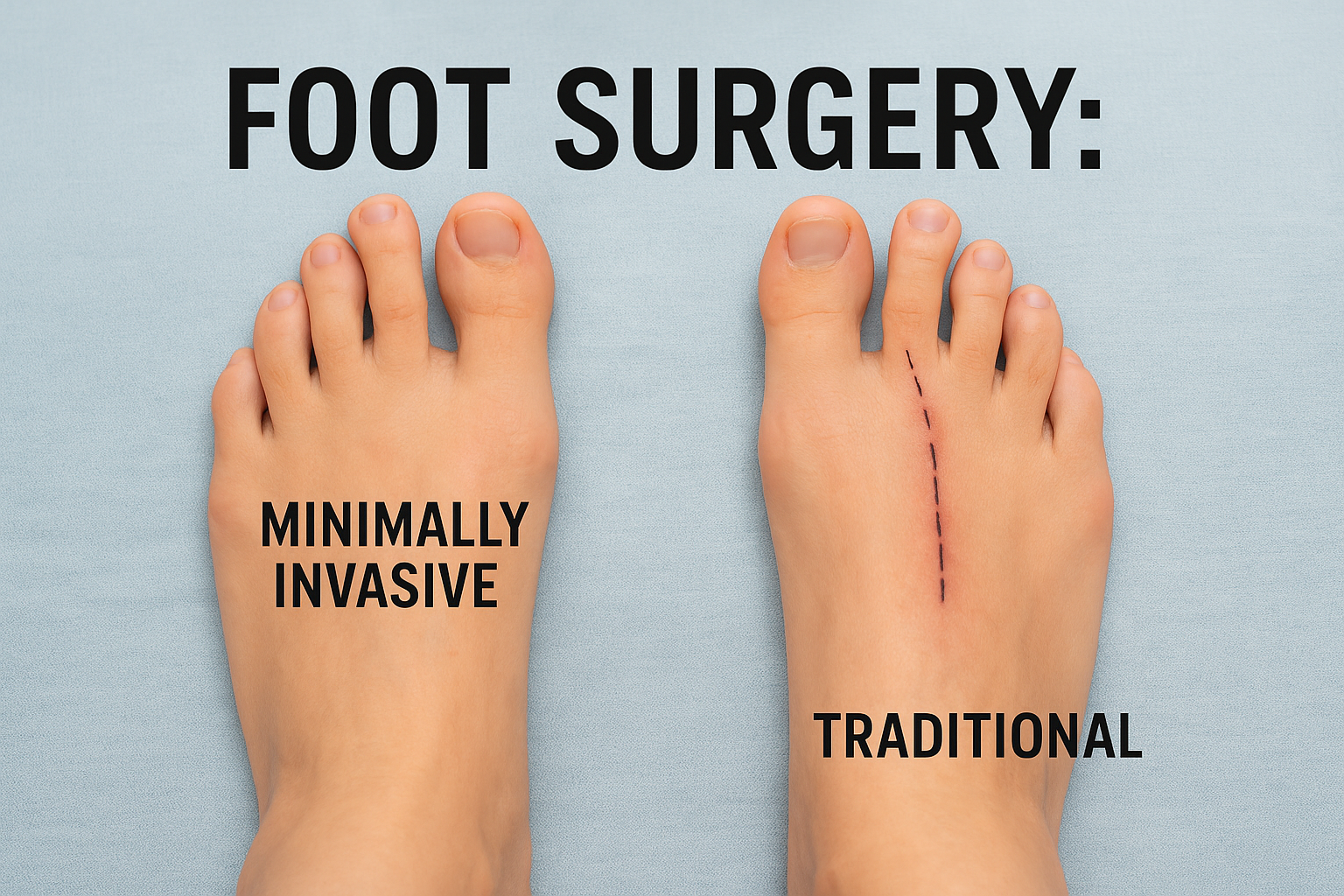Tingling, Burning, or Numbness? Early Diabetic Foot Nerve Damage Explained
Are you experiencing strange sensations like tingling, burning, or numbness in your feet? These could be the early signs of diabetic neuropathy, a common complication of diabetes that can lead to serious health issues if left unaddressed. Understanding the early stages of nerve damage is crucial for anyone managing diabetes. This article will delve into the causes and symptoms of diabetic foot nerve damage, helping you identify these warning signs before they escalate. By recognizing these early indicators, you can take proactive steps to protect your feet and maintain your overall well-being. Join us as we unravel the complexities of this condition, empowering you with knowledge and practical strategies to manage your symptoms and enhance your quality of life. Don't let numbness hold you back—learn how to stay one step ahead!
Understanding Diabetic Neuropathy
Diabetic neuropathy is a type of nerve damage that can occur in individuals with diabetes. High blood sugar levels can injure nerves throughout the body, but diabetic neuropathy most often damages nerves in your legs and feet. The condition is a serious complication of diabetes and affects up to 50% of people with diabetes. The damage caused by diabetic neuropathy can lead to a variety of symptoms ranging from mild discomfort to debilitating pain and disability.
The exact cause of diabetic neuropathy is not fully understood, but it is believed to be related to prolonged exposure to high blood sugar levels. This chronic hyperglycemia can lead to the damage of the small blood vessels that supply the nerves, impairing their ability to function properly. Additionally, metabolic factors, such as high cholesterol and high blood pressure, can also contribute to nerve damage.
There are four main types of diabetic neuropathy: peripheral, autonomic, proximal, and focal. Peripheral neuropathy, which affects the extremities, is the most common type and is characterized by symptoms such as tingling, burning, or numbness in the feet and hands. Autonomic neuropathy affects the autonomic nervous system, which controls involuntary functions like digestion and heart rate. Proximal neuropathy, or diabetic amyotrophy, impacts the thighs, hips, and buttocks, while focal neuropathy targets specific nerves, often in the head, torso, or leg.
Symptoms of Early Nerve Damage in Diabetic Feet
The early signs of diabetic foot nerve damage can be subtle but shouldn’t be ignored. Common symptoms include:
Tingling or “pins and needles” sensation
Burning or sharp pain, especially at night
Numbness or reduced ability to feel temperature changes
Muscle weakness or cramping in the legs or feet
Increased sensitivity to touch or pain
These symptoms might start gradually and worsen over time if left untreated.
Causes of Diabetic Foot Nerve Damage
Several factors contribute to nerve damage in the feet of people with diabetes:
High blood sugar levels: Prolonged periods of elevated glucose can injure nerves and blood vessels.
Poor circulation: Reduced blood flow deprives nerves of oxygen and nutrients.
Inflammation: Chronic inflammation due to diabetes can damage nerve tissues.
Injury or pressure: Repetitive pressure or trauma to the feet, often unnoticed due to numbness, can worsen nerve issues.
The Importance of Early Detection
Early detection of diabetic neuropathy is crucial for preventing severe complications and maintaining a good quality of life. Recognizing the early signs of nerve damage allows for timely intervention, which can slow the progression of the condition and reduce the risk of further nerve injury. Early diagnosis also provides an opportunity to implement lifestyle changes and treatments that can alleviate symptoms and improve overall health.
One of the main reasons early detection is important is the prevention of foot ulcers and infections. Numbness and loss of sensation can make it difficult to notice minor injuries, which can quickly become infected if not treated promptly. These infections can lead to more serious complications such as gangrene and may even necessitate amputation in severe cases. Regular foot examinations and vigilant monitoring can help identify issues before they become critical.
Furthermore, early detection can help manage pain and discomfort more effectively. Treatments such as medications, physical therapy, and lifestyle modifications are more likely to be successful when implemented early. By addressing nerve damage at its onset, patients can maintain better mobility and function, reducing the impact of the condition on their daily lives. Early intervention also emphasizes the importance of blood sugar control in preventing further nerve damage.
Diagnosis of Diabetic Neuropathy
Healthcare providers use a combination of methods to diagnose neuropathy, including:
Physical exams: Checking reflexes, muscle strength, and sensitivity to touch or temperature
Monofilament testing: Using a small nylon fiber to assess pressure sensation
Nerve conduction studies: Measuring how fast electrical signals move through nerves
Blood tests: To check for vitamin deficiencies or other contributing factors
Treatment Options for Early Nerve Damage
While nerve damage can’t always be reversed, early intervention can help manage symptoms and prevent worsening. Treatment options include:
Blood sugar control: Keeping glucose levels in target range is the most effective way to slow nerve damage.
Medications: Such as antidepressants, anticonvulsants, or topical creams to relieve nerve pain
Physical therapy: To improve balance and mobility
Laser therapy: Non-invasive treatment that may help improve circulation and reduce pain
Preventive Measures for Diabetic Foot Health
Protecting your feet is crucial. Preventive steps include:
Daily foot checks: Look for blisters, cuts, redness, or swelling
Proper footwear: Wear shoes that fit well and support your feet
Routine foot care: Trim nails carefully, moisturize dry skin, and avoid walking barefoot
Regular podiatry visits: Have your feet checked by a specialist at least once a year—or more often if you already have symptoms
Lifestyle Changes to Manage Diabetic Neuropathy
Adopting a healthy lifestyle is essential for managing diabetic neuropathy and improving overall well-being. A balanced diet that focuses on nutrient-dense foods can help regulate blood sugar levels and reduce inflammation. Emphasizing whole grains, lean proteins, healthy fats, and plenty of fruits and vegetables can provide essential nutrients and support nerve health. Avoiding processed foods, sugary snacks, and excessive alcohol consumption is also important for maintaining stable glucose levels.
Regular physical activity plays a crucial role in managing diabetic neuropathy. Exercise helps improve blood circulation, reduce blood sugar levels, and enhance overall cardiovascular health. Activities such as walking, swimming, cycling, and yoga can be beneficial and should be tailored to an individual's fitness level and preferences. It's important to consult with a healthcare provider before starting any new exercise regimen to ensure it is safe and appropriate.
Stress management is another critical component of living with diabetic neuropathy. Chronic stress can negatively impact blood sugar control and exacerbate symptoms. Techniques such as mindfulness meditation, deep breathing exercises, and progressive muscle relaxation can help reduce stress levels. Engaging in hobbies, social activities, and maintaining a support network can also contribute to emotional well-being and improve the ability to cope with the challenges of diabetic neuropathy.
When to Seek Medical Attention
Don’t wait until the symptoms get worse. See your doctor or podiatrist if you experience:
Persistent tingling, burning, or numbness
Loss of sensation in your feet
Unexplained foot pain or weakness
Open sores, ulcers, or signs of infection
Early medical intervention can help you manage your symptoms and avoid severe complications.
Conclusion: Staying Informed and Proactive
Managing diabetes means more than just monitoring your blood sugar—it also involves paying close attention to your body’s warning signs, especially in your feet. Tingling, burning, or numbness might seem minor at first, but they could signal the early stages of diabetic neuropathy.
By staying informed and proactive—through regular checkups, healthy habits, and early intervention—you can reduce the risk of serious complications and maintain better foot health for the long term. If you or a loved one is experiencing any of these symptoms, don’t wait. Reach out to a podiatrist who understands diabetic care and can help you take the right steps toward relief and prevention.











